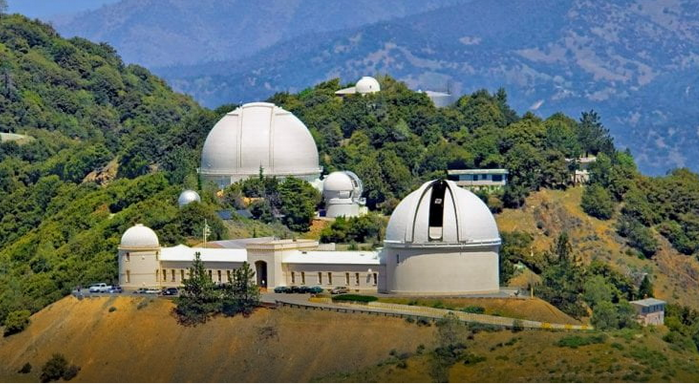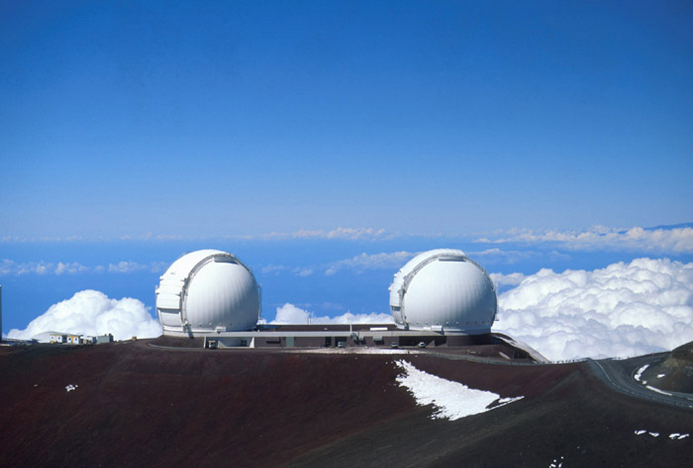

Last updated: 18 November 2024
I joined the staff of Lick Observatory (now the University of California Observatories, or UCO) in April 1976. I retired from my position as Research Astronomer in 2012 and now provide volunteer technical support for various Observatory projects. I also served on the governing board and as Treasurer for the Friends of Lick Observatory from June 2012 through August 2023. Between March 1998 and March 2003, I also served as a member of the Applications Strategy Council of the University Corporation for Advanced Internet Development .
Prior to retiring, my primary emphasis was directing the development computer software in support of control and data acquisition systems for the telescopes and instruments at Lick Observatory, as well as for several of the instruments at the W. M. Keck Observatory in Hawaii.


From 1990 through 2004, I directed the software development effort for the control and data acquisition systems for three optical instruments on the Keck Telescopes that were designed and built at UCO: HIRES (commissioned in 1993), ESI (commissioned in 1999), and DEIMOS (commissioned in 2002). I also directed the software effort for the upgrade of the detector system in the HIRES Spectrograph, from a single Tektronix 2K x 2K 24-micron pixel CCD to a 3 x 1 mosaic of MIT/LL 2K x 4K 15-micron pixel CCDs; that new detector system was commissioned in August 2004. More recently I developed software and helped to characterize the CCD detectors for an upgrade to the detector system of the red side of the Low Resolution Imaging Spectrograph (LRIS) at Keck Observatory; that upgrade was completed in 2009. I also developed software for and helped to characterize the performance of the Automated Planet Finder (APF) spectrometer and telescope at Lick Observatory, which became fully operational in 2013.
Starting in 1996, I coordinated efforts to develop the capability to remotely operate Keck instruments from remote sites in the U.S. and Australia. On March 2, 2011, at the Telescopes from Afar conference in Waikoloa, Hawaii, I delivered an invited talk that provided an overview of that capability. A more detailed chronology of my numerous activities related to remote observing can be found here.
Between 2008 and 2012, I coordinated efforts to install a high speed microwave link to the Lick Observatory facilities on Mt. Hamilton; that link provides greatly increased network bandwidth between Lick Observatory and the Internet. As an initial part of that effort, in November 2010 I oversaw the installation of a consumer-grade 5.7 GHz microwave link that operated in the unlicensed UNII-2 band and provided a bidirectional throughput of 35 Mbps. The final part of that effort was installation of a carrier-grade microwave link that operated in the licensed 11 GHz band and provided a bidirectional throughput of up to 200 Mbps.
In June 2011, I was awarded the University of California Observatories' inaugural Jerry and Jocelyn Nelson award in recognition of outstanding creativity, deep technical knowledge, and great persistence in creating innovative new instrumentation for astronomy. This award honors Jerry Nelson's fundamental contributions advancing telescope design and adaptive optics in astronomy.
In May 2012, shortly before my retirement from UCO in June of that year, the Support Astronomers of the W. M. Keck Observatory, in grateful recognition of my many years of contributions to the operation of the Observatory, dubbed me Sir Robert, Exalted Knight of the Keck Observing Support Realm.
POST RETIREMENT ACTIVITIES
Between September 2014 and March 2016, I oversaw the relocation of Lick Observatory's microwave downlink site from Santa Clara to San Jose. As part of that relocation effort, the bandwidth of both the 11 GHz and 5 GHz microwave links to the Observatory was upgraded. That relocation effort was described in a presentation, The Art of Maintaining a Microwave-Based Internet Link Across an Ever-Changing City Skyline, that I gave (with George Peek of UCSC Information Technology Services) at the CENIC 2.0 Conference in La Jolla, California on March 21, 2017. During the 2020 SCU Lightning Complex Fire on August 19, 2020 that burned up the mountaintop telephone lines and nearly destroyed Lick Observatory, these microwave links remained operational and provided a vital line of communication during this wildfire.
On November 24, 2020, as part of the Donald and Irene Osterbrock Leadership Program, I delivered via Zoom a presentation on the Status of the U.S. Election System.
OTHER RESEARCH INTERESTS
My research interests also include encoders and related systems for accurately measuring the position of telescopes and the domes that contain them. I am the principal inventor on 3 U.S. Patents involving systems for measuring the incremental and absolute positions of moving elements:
PUBLICATIONS
A list of my publications, including links to either abstracts or the manuscripts, can be found here. Some of the these publications are available both in Adobe PDF or PostScript formats. In some cases, the engineering drawings did not translate correctly when converting these documents from PostScript to PDF format. In such cases, please reference the original PostScript format of the document in order to properly view all of the drawings and diagrams.
RESEARCH INTERESTS NOT RELATED TO ASTRONOMY
Over the past 20 years, during my time away from work at UCO/Lick Observatory, I have been actively engaged in efforts to call public attention to various problems and issues related to the use of electronic voting machines in the conduct of our elections.
Between October 2003 and December 2008, I was a volunteer with the non-partisan VerifiedVoting.org, serving as their legislative analyst. I worked with state and federal legislative staff to develop and promote legislation to require that all voting systems provide an accessible voter-verified paper record.
I was also the co-organizer of the Forum on Electronic Voting. That forum was held on the UC Santa Cruz campus on October 26, 2003.
I served as a member of the Citizens Advisory Committee to the Santa Cruz County Elections Department and served as both a polling place clerk and precinct inspector in statewide and federal elections between 2003 and 2020.
On November 24, 2020, as part of the Donald and Irene Osterbrock Leadership Program, I delivered via Zoom a presentation on the Status of the U.S. Election System.
I also have an interest in transportation planning and public transit systems. While an undergraduate engineering student at UCLA, I developed the first computerized carpooling system for that campus; that system became operational in 1972. Between December 2003 and August 2005, I was a member of the Transportation Advisory Committee for UC Santa Cruz.